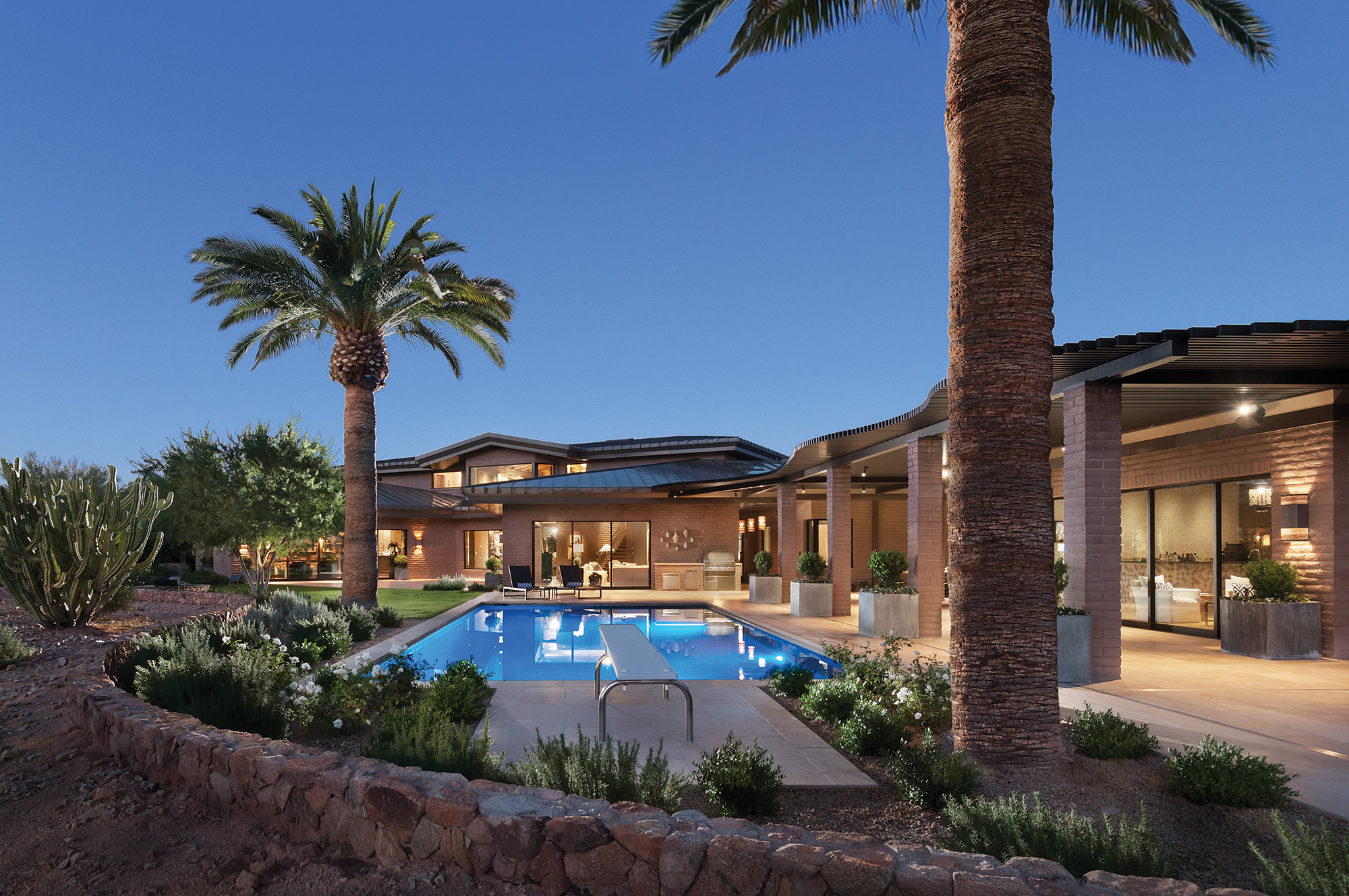
14 May Architectural Artistry
FOR THE SYMINGTON FAMILY, their home in Paradise Valley, Arizona, is the beginning of each day’s journey and the end. Here, they welcome the opportunities offered by the sunrise and the refuge of sunset.
John Symington is a hiker, and he and his wife, Marcella Billups Symington, envisioned their home as a celebration of their passions: heirloom antiques, artwork and a life shared with family and friends.
This is their “Trailhead.”
The home, designed by architectural designer Gerry Jones, was built to last. As a master of residential desert architecture, Jones’ designs range from traditional to contemporary but always relate to their site in an honest manner by incorporating their natural surroundings.
The 10,380-square-foot home was built by La Casa Builders and was coordinated by company owner Tim Larson and his now-retired business partner, Ron Steege. “Our firm has been fortunate to have delivered a number of outstanding luxury homes during our first 25 years, but this one in particular affirms our commitment to building for longevity and long-term value. We used quality materials that are capable of withstanding our punishing desert summers,” says Larson. “It was a great project and great clients.”
Completed in June 2014, the three-story home includes five bedrooms, eight bathrooms and his-and-hers offices. The pubic spaces and children’s wing appear on the main floor, while the master bedroom and its Japanese-inspired bathroom are located on the second. On the basement-level, there’s a quatrefoil wine cellar designed in the spirit of Portugal. Above the Moroccan-themed pool house is a second-story patio with seating and a fire pit, a quiet reprieve offering views of Camelback, Mummy, McDowell and the legendary Superstition mountains.
“We engineered and constructed this home way beyond code — not because we had to, but because this is what we wanted to do,” Jones says, noting that the home has a 150- to 175-year lifespan, without need of a major restoration. “The materials — sand-blasted concrete, Douglas fir beams, redwood ceilings and anodized bronze on the roof and fascia — will age gracefully to a soft patina,” he adds.
The Trailhead’s interior color pallete is composed of warm neutrals that echo the colors of the Arizona landscape. “Playing against this color scheme are vibrant blues, greens and reds, including the high-gloss, peacock-blue butler’s pantry covered in Chinese blue-and-white porcelain, the Moroccan-themed pool house and the rich, vibrant jewel-tone velvets in the living room,” says Melissa Morgan of M Interiors, who designed the home’s décor.
Located on almost 3 acres, the home sits below Camelback Mountain, sheltering the family while they swim, entertain or enjoy an Arizona signature sunset comprised of neon oranges, reds, teals and baby blues.
The previous home on the property was sited in just the opposite way. That home, built in the 1950s for the great-grandson of Anheuser-Busch founder, Adolphus Busch, turned away from the mountain so that as the homeowners entered, they walked away from the best seats in the house.
“Gerry, who’s always been a master of siting, turned the house around toward the south side of the mountain, siting it just perfectly so that the living and entertaining spaces face it,” says Steege, with La Casa Builders.
Jones, in fact, is known for his work on extreme hillside homes, such as those in the high desert of Carefree, Arizona, the town just north of Scottsdale he helped develop 60 years ago and has called home ever since. His personal residence is perched on a seemingly impossible site; a home nestled into the boulder-littered hillside atop Black Mountain.
Trailhead isn’t built into a hillside, but it appears to be. The public areas, pool house and the upstairs master bedroom face Camelback Mountain, taking in its shifting show of light and shadow. As visitors enter the home, they are greeted by the family and the area’s defining feature.
The structure of the home reflects that of the iconic mountain, too. In the dining room, a central beam of European white oak leads the eye toward the peak of Camelback, and the trusses in the master bedroom make a similar beeline to the mountaintop.
The view extends across the backyard, which features a pool and desert-sensitive, minimalist landscaping created by Berghoff Design Group of Scottsdale. Xeriscaped mounds ensure privacy, secluding the home from the neighborhood and diverting runoff from the desert monsoons into islands of desert vegetation.
“A unique feature of this home is the discovery that guests experience when entering the property,” says Jeff Berghoff, founder of the landscaping company. He explains that the driveway weaves throughout the desert to approach the main home. Visitors are unaware that they’re driving through the estate’s backyard before the dramatic arrival at the front entry. “This opens guests to a whole new view of the mountain and a lush garden with citrus trees and roses,” he says.
The landscape includes a variety of plants, including agave, iceberg roses, rosemary, silver sage and oleander, among many others.
Inside the home, art reigns supreme: Goya bullfighting scenes adorn the foyer; a portrait of Chinese Tang Dynasty poet Li Bai [701–762] hangs in the living room; a copy of the Maharaja Duleep Singh, the last maharaja of the Sikh Empire, from the Victoria and Albert Museum, sits magisterially in the pool house; and Naga, an Indonesian wood-and-gold dragon, stands sentinel over the collapsing doors in the family room.
“The idea for this house was, most importantly, to merge the client’s existing collections of art, artifacts and furniture into a new home suitable for a young family with children,” Morgan says of the home’s interior design.
On a shelf in the family room, for example, sits Old Overholt whiskey bottles. Said to be America’s oldest continually manufactured brand of whiskey, the company was owned by Henry Clay Frick, John Symington’s great-grandfather.
To ensure the family heirloom pieces were incorporated into the design, each artwork or artifact was assigned to a specific room from the start. “That way, we knew exactly what pieces we needed to source to complete the vision in each space,” Morgan says. “Some of the existing furniture was reupholstered in order to make it work in each color scheme.”
The framed La Tauromaquia by Goya, for instance, drove the entry’s design. Purchased in Spain in the early 1950s by Marcella’s mother, the 40 etched aquatint plates illustrate bullfighting, with five additional plates offering a description. They were printed in 1919, more than 90 years after the death of the great Spanish artist.
“This home is a model of elegance and superlative craftsmanship, combining dramatic siting, desert-sensitive landscaping and discreetly finished with the owners’ heirlooms and acquisitions,” Steege says. “Its coordination of architectural artistry and art is simply extraordinary.”
- “I had to fight for this color,” Marcella Symington says of the striking teal blue in the butler’s pantry, which she noticed in a magazine. The heirloom plates reinforce the color, creating a pleasant contrast with the otherwise neutral palette.
- The cozy, elegant Louis XV sofas, cocktail table and bergères are heirlooms, as is the Turkish rug. On the shelves are family items, each one with a story. “It’s such a pleasure to be able to incorporate these sorts of items into a client’s home as opposed to purchasing everything for decorative purposes,” says interior designer Melissa Morgan.
- The dining room expresses the durable, high-quality, sandblasted concrete bricks that compose the exterior and some interior walls. The look recalls adobe, the centuries-old building method popular in the Southwest for its strength and high-insulating properties. The ceilings are hardy Oregon Douglas fir, which were dehumidified and sandblasted. Redwood ceiling planks were chosen because their tannic acid repels termites and they resist warping. The rich interior includes heirlooms from both husband and wife: matching crystal chandeliers from his family; the Louis XVI table from his grandmother; and the focal-point, an eight-piece painted-wood screen with traditional Chinese imagery, purchased in Paris by her mother and renovated in San Antonio, Texas.
- The home was designed to celebrate Camelback Mountain and maintain native vegetation. The pool area, therefore, transitions from a green oasis to natural Sonoran Desert at the property line. The soffits of the metal roof offer drama as the sun moves across the property.
- The wallpaper, Plum Blossom, is hand-painted on a tarnished silver background and is from de Gournay, London. The antique Venetian mirror intensifies the drama. |
- In the foyer, guests are greeted by Francisco Goya charcoals, which the owner’s mother acquired in Spain during the 1950s when she was in her “bullfighting and flamenco dancing stage.”
- The couple can access the second-floor master by an elevator or stairs. Italian armchairs from the 1920s, a Cameron Collection Lakewood sofa, a 1950’s Murano chandelier and a French coffee table, circa 1965, with a honed black marble top round out the room’s décor.
- Fitted with a skylight, the master closet incorporates antelope wool carpet, a crystal chandelier, custom wood cabinetry, a French oluchesse-brisée and a mirrored vanity. “It’s every girl’s dream closet,” the interior designer says. “It’s a little bit of heaven and a retreat from hectic everyday life.”






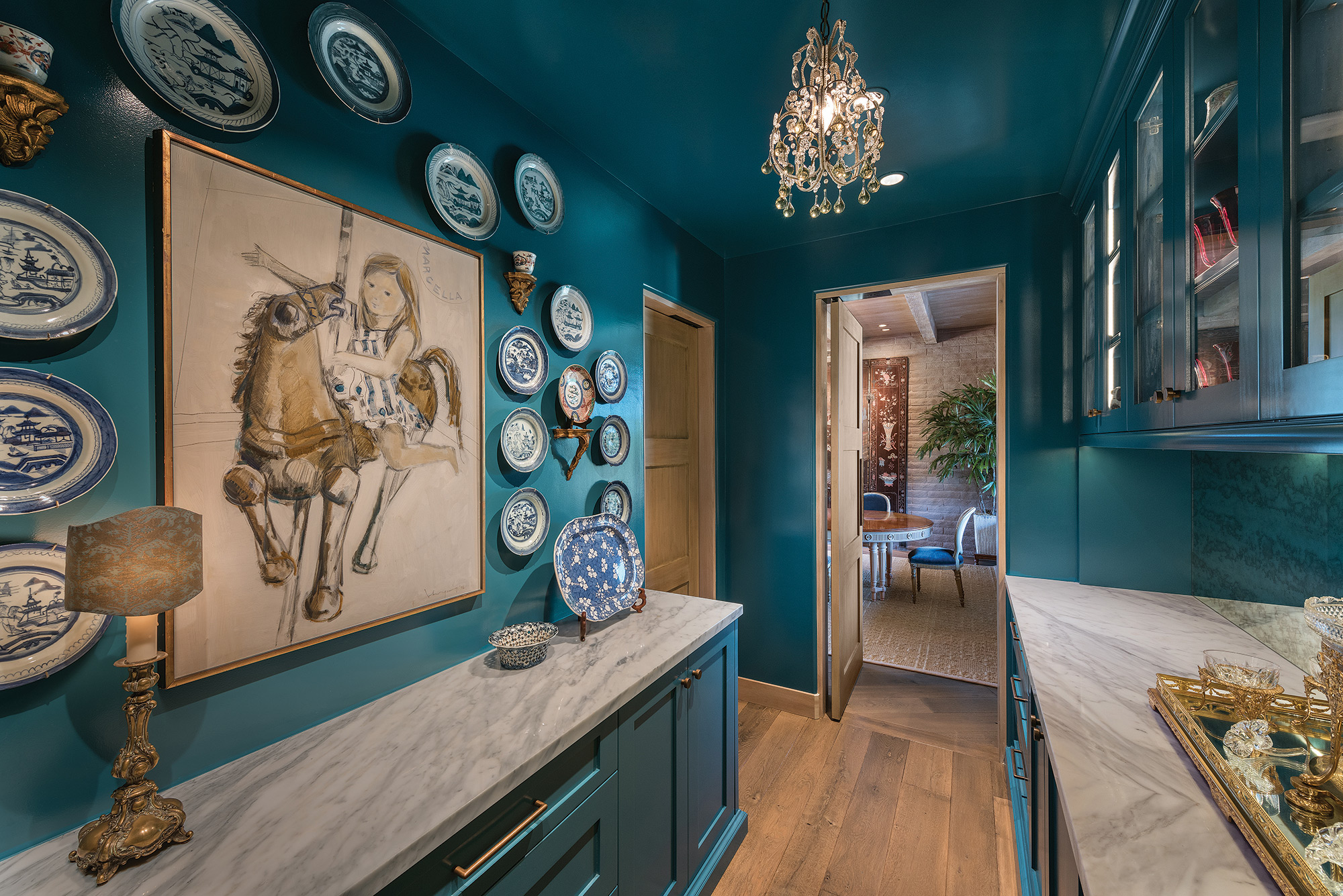
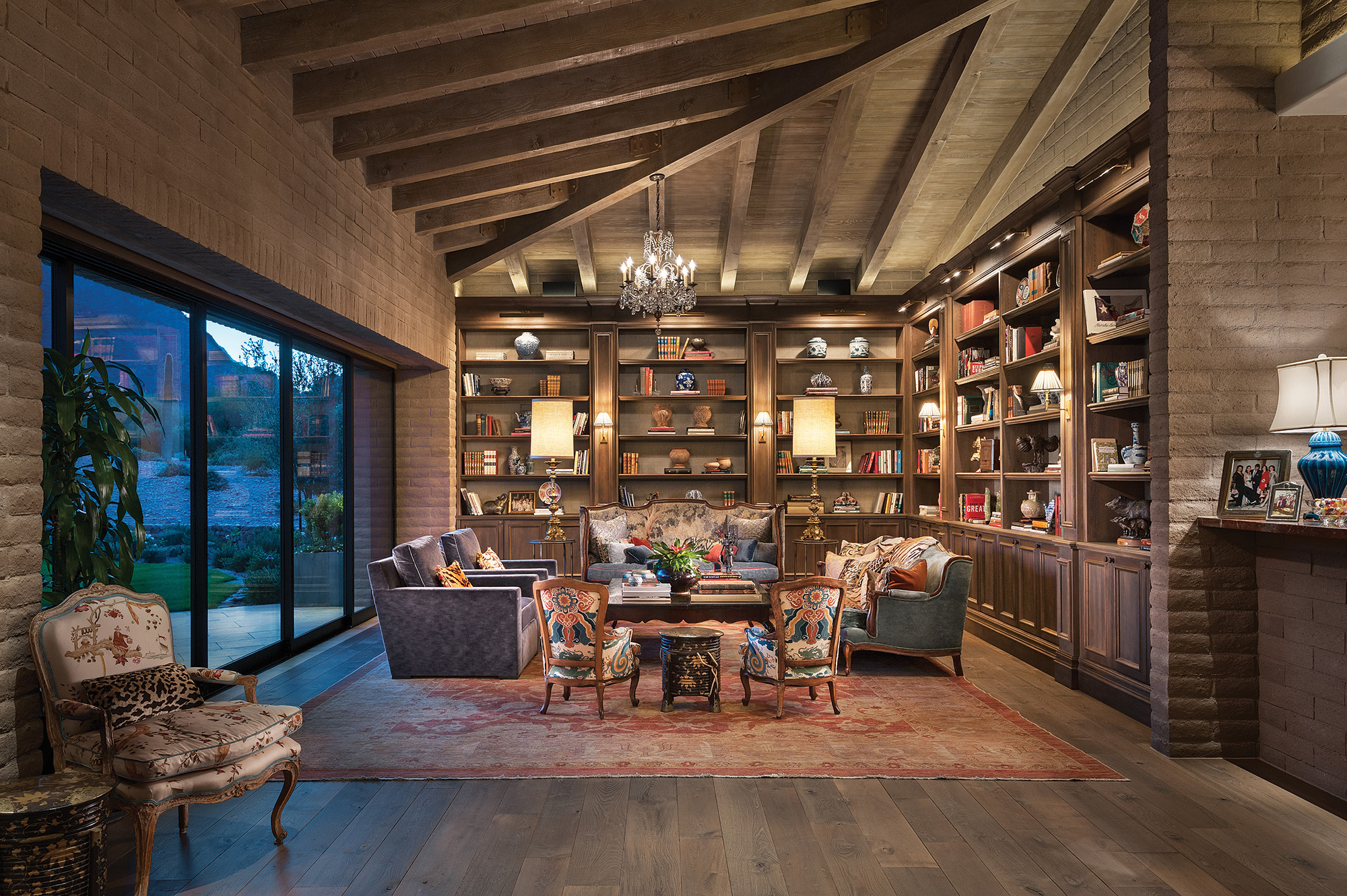
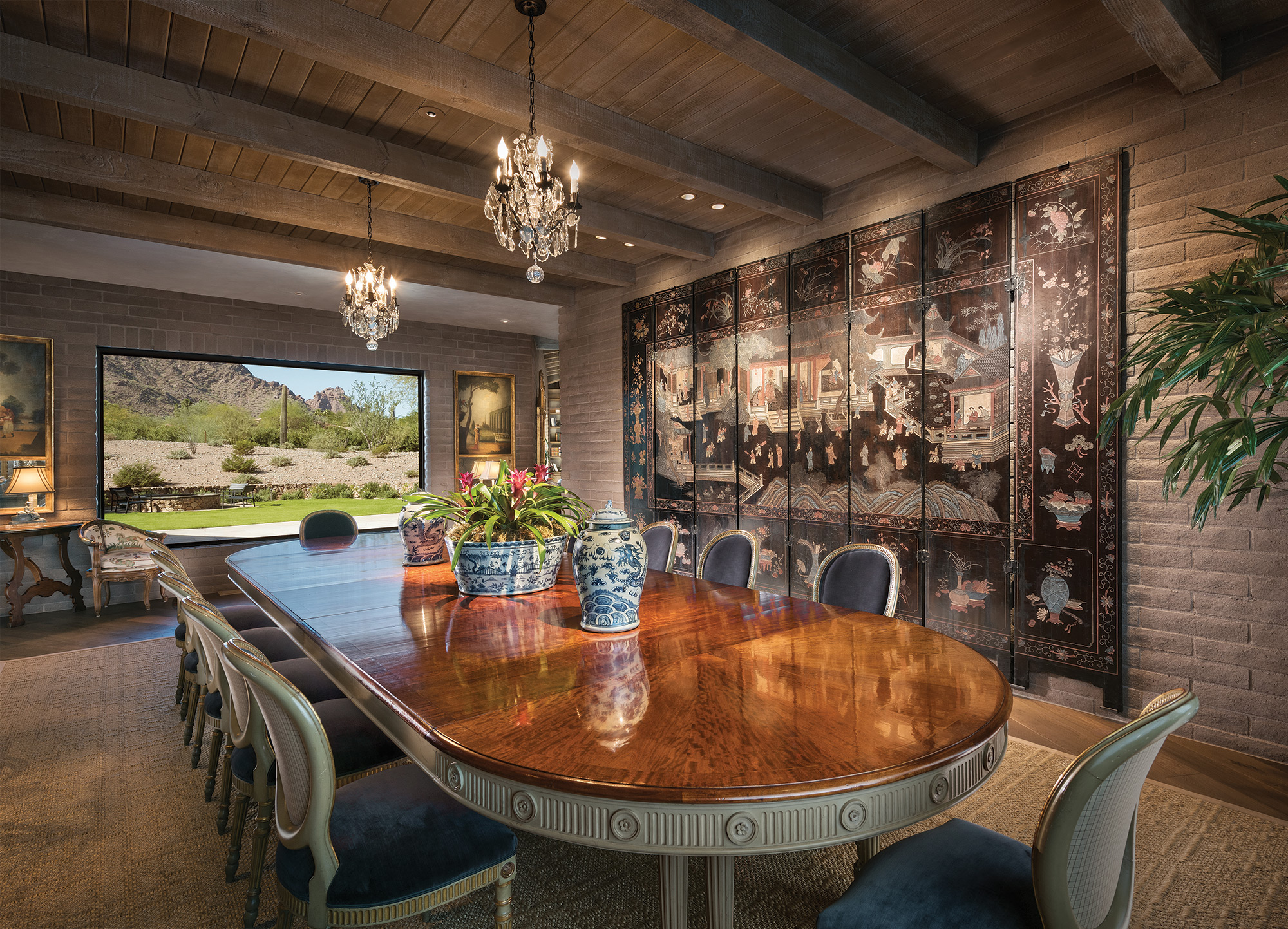

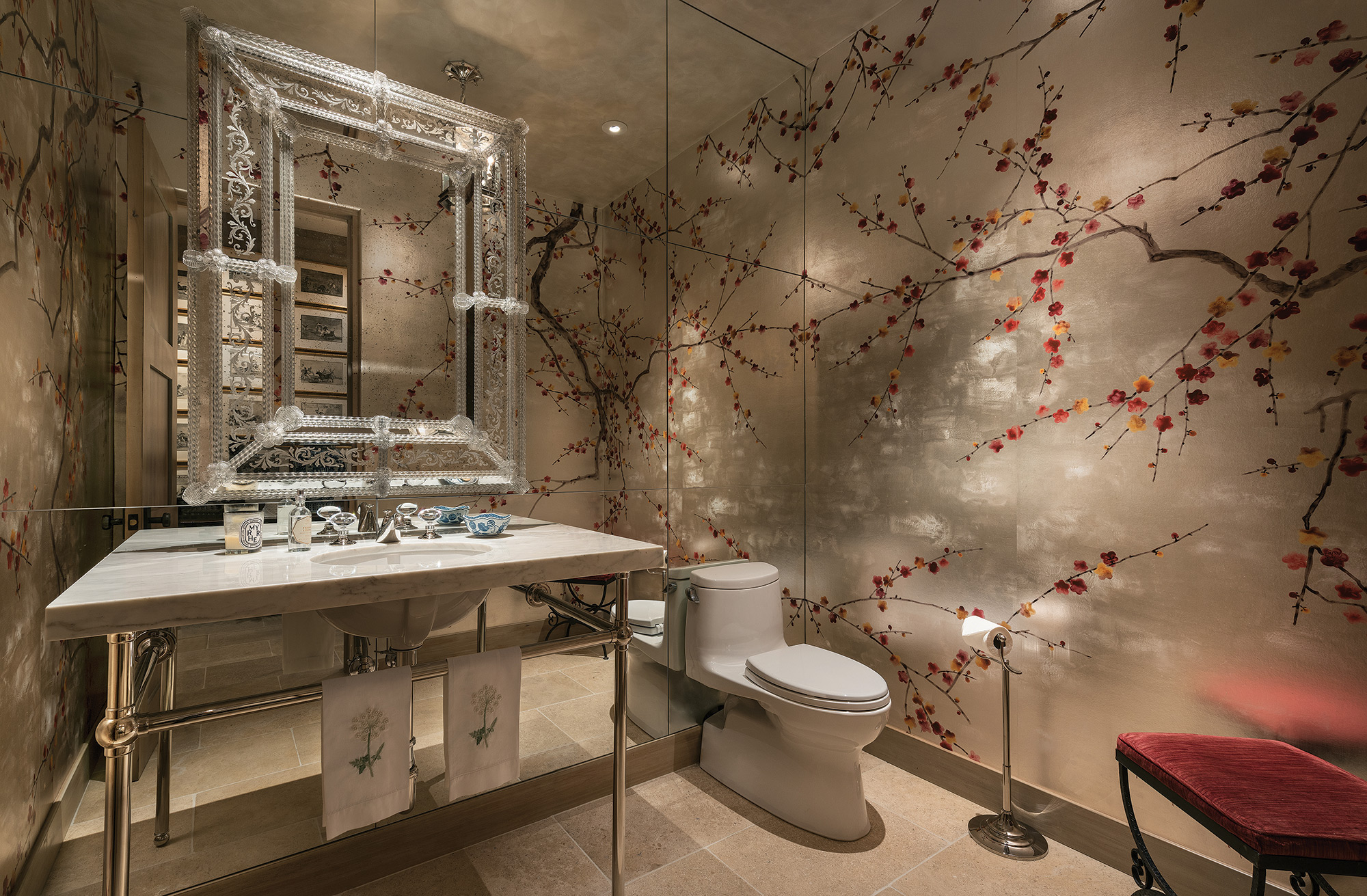
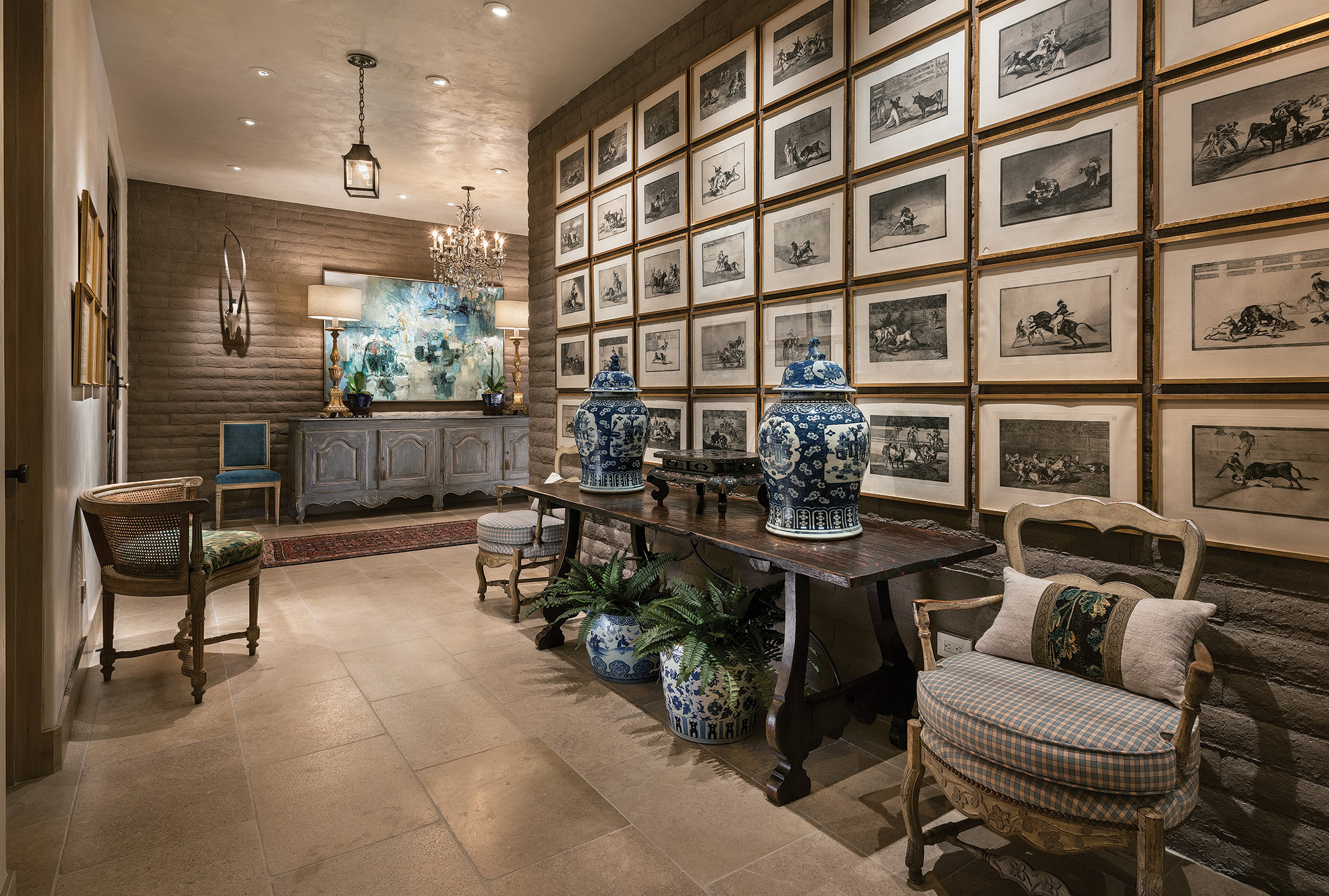

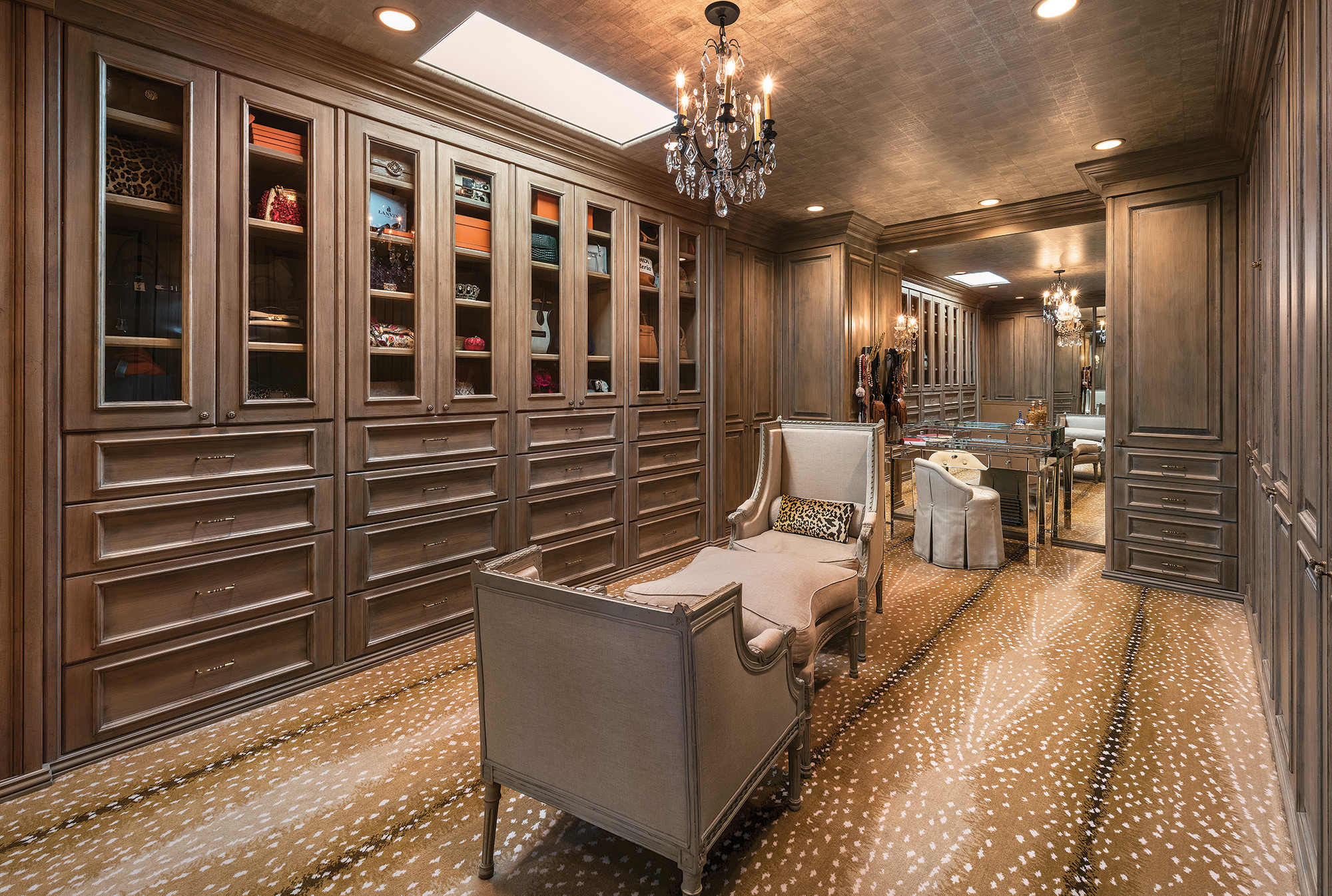
No Comments